Jeanette Andrews Blends Artificial Intelligence and Magic in “Taken by Artificial Surprise”

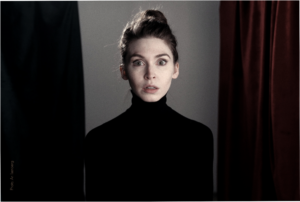
Jeanette Andrews is a magician, artist, and self-proclaimed research junkie. She began working with magic at the age of four and hasn’t stopped since. As she got older and saw how magic was being portrayed in popular media as a glamorous, large-scale spectacle or entertainment for kids, she became interested in the history of magic and saw that it was once as culturally acclaimed as art forms like music and dance. Seeking to recontextualize magic and fill the gap she saw in contemporary art and cultural institutions, she has developed a practice that blends art and magic.
Andrews’ latest work incorporates artificial intelligence and hierarchies of surprise. She asks why some effects elicit more surprise than others and whether machines are capable of being surprised. Opening July 28th at Culture Lab LIC, Taken by Artificial Surprise represents her largest, most ambitious installation to date. Connecting over email and on the phone with the sounds of install day buzzing in the background, we spoke with Andrews about art, magic, and her foray into machine learning.
Annabel Keenan: You’ve been performing magic almost your entire life, over 27 years as you said, how did you get into magic? What was your early life as a magician like?
Jeanette Andrews: I became interested in magic after seeing a Seigfreid and Roy special on network television. My first magic performance was for my preschool class when I was four, and I had my first paid-performance at age six. Magic was the only job I ever held throughout my childhood, teens, and early 20s. Until recently, magic was my full-time, sole, lifelong profession. Now, I’m fortunate to have an artistic practice as well.
AK: You called yourself a “research junkie.” Why is research so important to you?
JA: Research forms the foundation of everything that I do. I love understanding why things work the way they do. I begin by looking into a concept that really fascinates me, and then I explore it from multiple angles: scientific, philosophical, sociological, historical, etc. I then zoom-in to minute details that I end up building a work around. For Taken by Artificial Surprise, I researched Victorian parlor games and the history of early computing machines in the mid-1800s, including Ada Lovelace, who is considered to be the first modern computer programmer, and a woman, which was certainly unusual for the time. I also attempted to learn to code in Python with the help of a few fantastic programmers so that I could better understand how machine learning works.
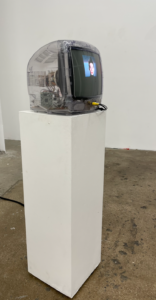
AK: You’ve mentioned before how you see a connection between philosophy and magic and you were interested in how art is used to investigate philosophical questions. Can you elaborate?
JA: When I was around 14 or 15, I became interested in philosophy and started reading about aesthetics. I realized that a lot of the questions that philosophers were asking and exploring through the lens of art (how we perceive the objects around us, subjective experience, etc.) were similar to the questions that are at the heart of magic. A number of philosophers have thought of philosophy as a lived practice rather than a pen and ink exercise. I’ve long been interested in the idea of having people actively participate in philosophical exercises, and magic provides an interactive structure for how we contextualize the world.
AK: Is there much historical precedence for magic as a cultural experience and art form?
JA: Actually, yes. In my late teens, I learned that magic used to be considered much more culturally prestigious than it was in the 1990s when I was growing up. I was surprised to learn that in the mid- to late-1800s magic performances were nearly on par with performances like ballet. I have a deep love and respect for the history and practice of magic, and it has been my lifelong goal to recontextualize the tradition in a cultural lens, which I’ve been able to do by combining art and magic.
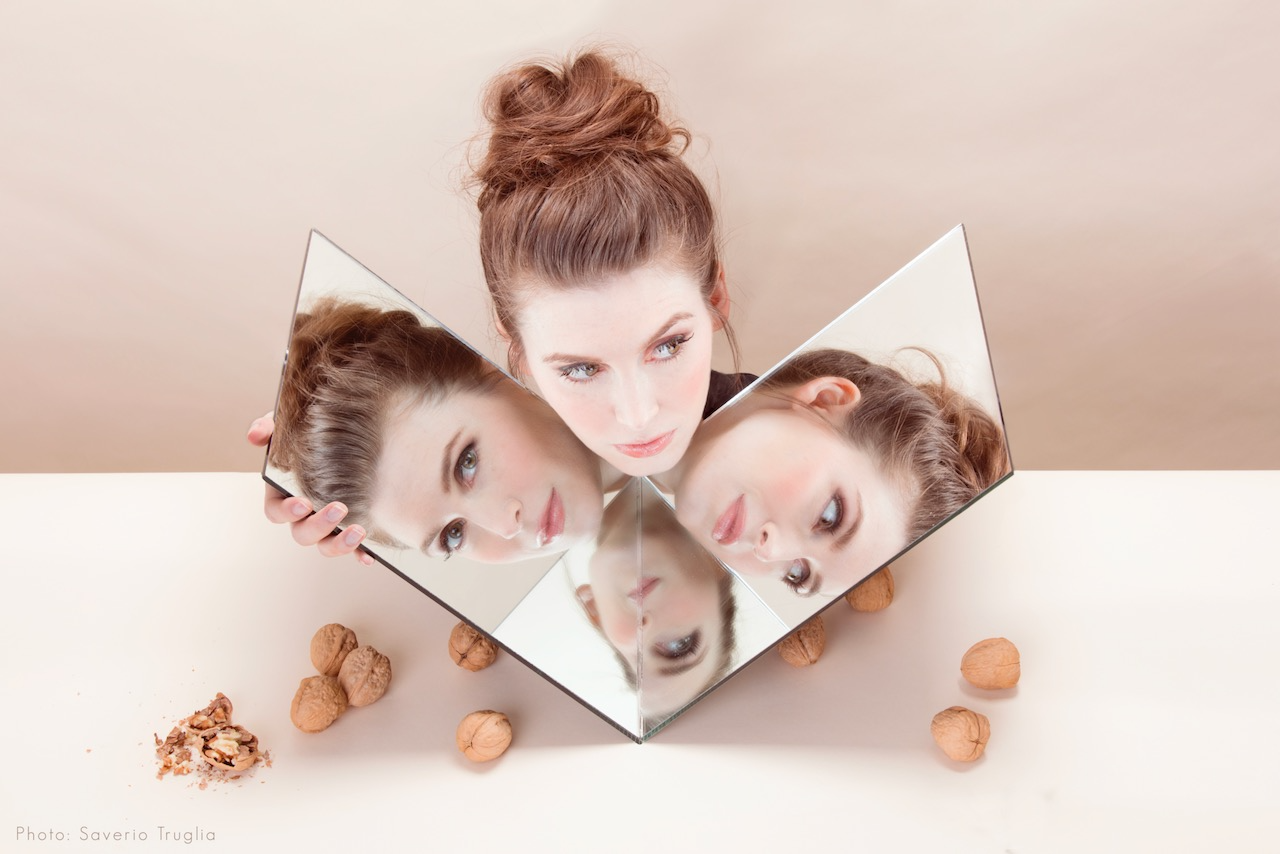
AK: Let’s dive deeper into Taken by Artificial Surprise. I understand the origins of the project stem from your experience with metaLAB at Harvard. Can you talk about how this impacted your research and work?
JA: The concept started a few years before metaLAB. Around 2017, I began to wonder why certain magical effects evoke a more surprised reaction than others, so I started to look into the psychology, science, and philosophy of surprise. In 2019, I found a paper by Thomas Griffiths titled, “Revealing ontological commitments by magic,” which discusses object transformations in magic, and it gave me a lot to think about. I continued exploring this concept of surprise and hierarchies of surprise, and in the spring of 2021, I was fortunate enough to be named an affiliate of metaLAB at Harvard, which is an idea foundry, knowledge-design lab, and production studio experimenting in the networked arts and humanities.
metaLAB was an incredible experience that introduced me to the history of technology. Dario Rodighiero and another colleague recommended that I read Alan Turing’s seminal paper from 1950, “Computing Machinery and Intelligence.” Turing drew inspiration from Victorian-era parlor games and came up with “the imitation game”, his own parlor-style amusement. The game involved people hidden behind curtains, with an ‘interrogator’ attempting to determine their respective identities based upon a process of written questions and answers.
This inspired the now-famous Turing Test that investigates artificial and computational intelligence and asks “can a machine take us by surprise?” Given my work in magic and my interest in surprise, metaLAB principal Matthew Battles posed the question about whether or not the parlor game that Turing based his thought experiment on bore any resemblance to the Victorian parlor magic. From there, I began to investigate if parlor magic might be an interesting way to determine whether or not a machine can take us by surprise.
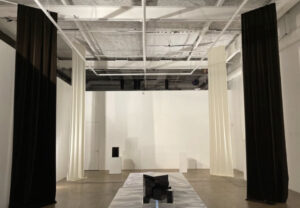
AK: How does this investigation manifest in Taken by Artificial Surprise?
JA: In short, Taken by Artificial Surprise explores historic parlor magic to examine hierarchies of surprise and the human creation of surprise as compared and contrasted to that of machines. What might performances of the seemingly impossible demonstrate about the capabilities and limitations of both machine learning and the human mind? The performance aspect of this work highlights historic pieces of magic presented alongside magic developed with the help of AI with varying levels of surprise. Due to the inherent strangeness of magic, participants might find themselves a bit unsure as to what was created by a machine versus a human.
For the algorithmically-generated aspects of the performance, I used historic magic catalog texts to create a machine learning model that makes descriptions for novel magic effects (with major help of software engineer Doug Duhaime and anthropologist Matthew Battles). We thought it might be an interesting way to discover whether a machine could take a human by surprise and the degrees of that surprise. After we had a number of descriptions for unusual pieces of magic, I selected some and then spent months devising ways to actually perform them in the real world. So even the ‘AI-generated’ work is still essentially human-made in execution. I think this is an interesting way to spotlight the moment that we are in with machine learning and how there is / can be a deeply human element to it.
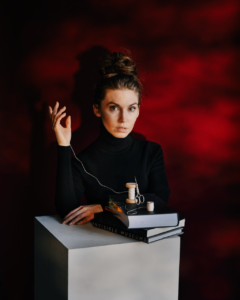
AK: What will the installation look like?
JA: The installation welcomes attendees to step inside a thought experiment – a Turing Test of sorts. CultureLab has a massive space and I wanted to emphasize its scale. Viewers are met with a series of 25-foot-tall hanging curtains made of different materials (vinyl, latex, and velvet) that are tied back with gray leatherette printed with text and diagrams from scientific studies, philosophical texts, and my own notebooks. Much of the research that I was doing surrounding surprise was based on the philosophical idea of ontological commitments (“the conceptual categories we use to organize our experiences,” (Thomas Griffiths citing the work of Ryle, 1938). With the curtains, I wanted to showcase how we make subconscious assumptions about even simple materials, while also paying homage to Turing’s ‘Imitation Game.’
Also in the performance gallery is a large table draped in white satin with numerous opaque and semi transparent black acrylic boxes on top. Each box contains common, yet sometimes unusual household objects, such as wine glasses, ice buckets, and snap peas. A number of pedestals around the space also hold larger acrylic boxes containing objects. These objects were all derived from an OCR scan of the historic Martinka and Co.’s 1899 “End of Century” magician’s catalog, the Illustrated and Descriptive Catalog of New and Superior Conjuring Wonders. I chose the 12 most commonly cited nouns.
In an adjacent gallery, participants encounter a large circular hanging structure of chiffon curtains, obscuring what may or may not be inside. These curtains are also printed with text of magic performances that are historic, algorithmically generated, and a combination thereof.
Finally, a small, transparent TV corner will play a short film of myself reciting a script that was generated by open AI in response to the prompt, “Tell me a surprising story.” This recitation is paired with visuals of classic magic props and filmed in a set modeled after the Cornell boxes that inspire the CGI programmers.
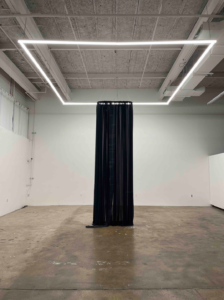
AK: Have you always incorporated an installation component with your work?
JA: I began incorporating installation into some of my work in 2017 with a piece that I did for MANA Contemporary Chicago titled Impossible Gardens. For this piece, gardens were planted via mysterious means as attendees used seed paper cards to perform a magic illusion in their own hands without knowing how. Performances included installations of sod and one ton of soil in galleries.
After this, also in 2017, I did a small-scale pop up commission for the Museum of Contemporary Art Chicago titled Invisible Roses. It included over 1,000 roses and live sod in the lobby that helped participants locate a hidden performance via maps in invisible ink revealed via rose petals. In the performances, fabric was cut and magically restored itself, and a rose was destroyed and came back to life.
Taken by Artificial Surprise is the first work of this scale that I’ve done, which has been such a wonderful experience and I’m really grateful to the CultureLab team for their enthusiasm and support. I would like to note that this work is made possible by Franklin Furnace Archive, Inc. and the New York State Council on the Arts with the support of Governor Kathy Hochul and the New York State Legislature.
AK: What’s next after this performance? Will you continue working with machine learning and surprise?
JA: I’ve got a couple of things coming down the pipe after this project that I’ll keep under my hat for now… I’ll let them be a surprise! I would definitely love to keep exploring this idea of surprise, and I’m always excited about exploring ideas on sound and scent as well, but that’s all I will share for now.
Taken by Artificial Surprise will take place Thursday, July 28 – Sunday, July 31, 2022 with performances starting at 7:30 pm. CultureLAB LIC is located at 5-25 46th Avenue, Long Island City, New York, NY 11101
You may also like:
TERMS OF ENGAGEMENT: Performance Art(ists) and Language(s)
My Dear, What Are You Afraid Of?: Silkworm Pupas Video-Poem in Response to Anti-Chinese Sentiments
What's Your Reaction?
Annabel Keenan is a New York-based writer focusing on contemporary art, market reporting, and sustainability. Her writing has been published in The Art Newspaper, Hyperallergic, and Artillery Magazine among others. She holds a B.A. in Art History and Italian from Emory University and an M.A. in Decorative Arts, Design History, and Material Culture from the Bard Graduate Center.

